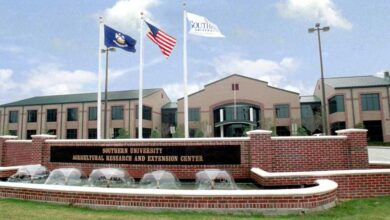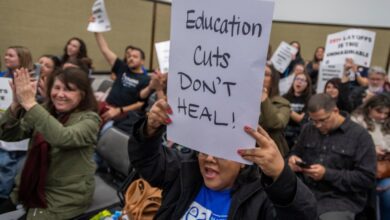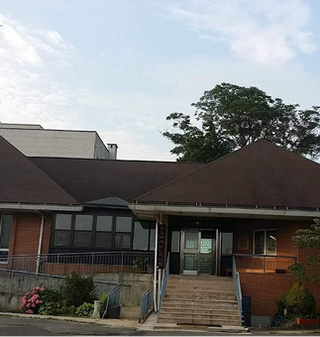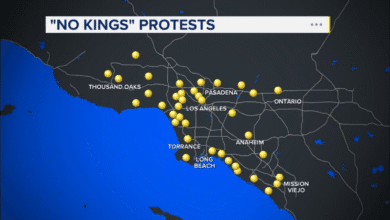Sharp cuts at California State University, but one Southern California campus is feeling it more
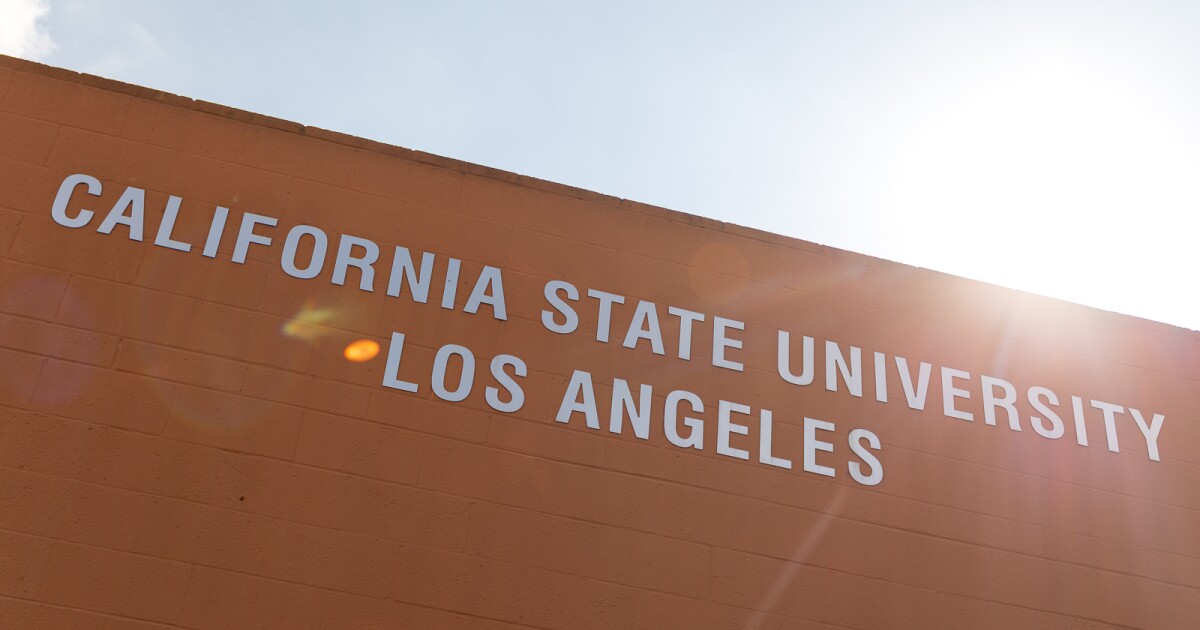
Over the summer, California State University officials informed its campuses of the bad news: a drop in state funding and enrollment would mean budget cuts of $1 billion.
Now faculty say the impact of those cuts is being felt among lecturers more than other employees.
Lecturers are college faculty who teach part time or full time but who do not have benefits or job protections that tenured faculty do. Lecturers frequently have the same types of degrees that tenured faculty do. They also make up a majority of CSU faculty.
The number of classes lecturers teach depends on the needs of the university departments and during economic downturns are typically the first to be told that their services won’t be needed.
How faculty are affected
Last year was a very good year for California State University, Los Angeles lecturer Dmitri Seals.
“I was awarded the Outstanding Lecturer award for Cal State L.A. in 2023,” Seals said.
For the previous six years, he’d taught about the sociology of race, gender, and inequality as well as projects that sought to close income and digital inequality gaps.
“I was so deeply honored by [the award] and I viewed it as an opportunity to expand my work in teaching,” he said.
But about six months after the fanfare and the recognition died down his department gave him bad news.
“[I] was definitely disappointed when I learned that I wouldn’t be teaching in Fall 2024,” Seals said.
The classes that he’d taught for years were not available to teach, he said. His higher-ups later offered him fewer classes to teach in topics that he had not taught before; Seals declined those and decided to focus on projects to increase entrepreneurship and other economic opportunities, funded by municipal grants.
Cal State L.A. has 82 fewer lecturers now versus this time last year, according to a university spokesperson. They added that the number is preliminary and could change.
Cal State L.A. is not the only campus seeing enrollment drops. Student enrollment in 2023 was down nearly 8% at the Dominguez Hills campus compared to the year before, while the San Bernardino campus saw a nearly 5% drop in the same time period.
From one campus to another
Debito Beamer taught political science classes for six years at Cal State L.A. He said that about a year ago administrators told him and other lecturers to brace themselves for budget cuts. He didn’t know how bad it was going to be.
“Then comes May, and they say, ‘Guess what? Budget cuts. We’re not going to give you any classes,'” he said.
As he scrambled to find work, he found out CSULB and other Cal State campuses, unlike Cal State L.A., were hiring.
Debito Beamer taught political science at California State University Los Angeles until he was laid off
Adolfo Guzman-Lopez
/
LAist
)
“This semester, I am teaching 400 students, 22.5 units,” said Beamer, who now teaches mostly at Cal State Long Beach this semester.
Beamer’s experience sheds light on the different impact the CSU cuts are having among the 23 campuses in the university system.
Amid cuts, some campuses are growing
At CSU Long Beach there are 1,730 lecturers this month — 60 more than a year ago. A university’s spokesperson said there are eight fewer tenure-track faculty.
California State University, Northridge offers 6,407 classes this semester; that’s 180 more than a year ago, according to numbers provided by the university. CSULB is offering 210 more classes in the current semester than it did one year ago.
“There was a conscious effort on behalf of the university and its leadership to ensure that we could protect what happens in the class into teaching and the students as much as possible,” said CSUN spokesperson Carmen Chandler.
CSUN has additional 20 lecturers this year, which puts them just under 1,300. Tenured faculty remained nearly the same.
It’s unclear how severe the cuts are in the different departments. Universities don’t publicize departmental faculty and class counts and there are other factors affecting those numbers year after year — “for example, curricular changes,” said CSULB spokesperson Jeff Cook via email. “Enrollment shifts; retirements; the rate at which new hiring can be made and the possibility of unsuccessful searches; release time for service, research, and scholarly and creative activity.”
For now, some CSULB administrators are making cuts in supplies and other costs that don’t have to do with salaries.

One of the main entrances at California State University Long Beach
Ashley Balderrama
/
for LAist
)
“We have to be very thoughtful about equipment purchases,” said Curtis Bennet, dean of CSULB’s college of natural sciences and mathematics. And that’s a big deal, he said, because of the college’s laboratory work.
Enrollment also affects budgets — more students means more tuition filling the coffers. Cal State L.A. saw a 7.8% drop in student enrollment in fall 2023, according to university data. In the same time period, the university cut over 10% of its classes.
Drops in population in California and COVID-19 contributed to recent enrollment drops at California colleges. But campuses are affected differently.
At Cal State L.A. two factors are key: “Regional trends on college-age adults and — for this year — the federal processing delays on financial aid for a campus that primarily serves Pell-eligible students,” said Cal State L.A. spokesperson Erik Hollins.
Enrollment at CSULB was up 3.3% and nearly 1% up at CSUN in that time period.
More cuts coming
By most accounts, CSU plans to also cut campus budgets in the 2025-26 academic year.
What appears to be surfacing are different approaches and different impacts, depending on the campuses.
“I think the university-wide discourse has been defeatist around enrollment,” Seals said of the approaches he’s heard in the last academic years at CSULA.
LAist requested an interview with a Cal State L.A. administrator to explain how the drop in faculty is related to the drop in enrollment, but no one was provided.
Seals said the conversations he heard and took part in before and after his Outstanding Lecturer award didn’t include any forward-looking plans or excitement about serving university students who grew up in mostly working class communities, even amid a dire financial situation.
“It was more like, ‘Well, this is what’s going to happen to us,’ instead of, ‘Here’s what we’re going to do together,’” he said.
The ultimate impact, he said, is felt most by students who are just trying to get to graduation day.

